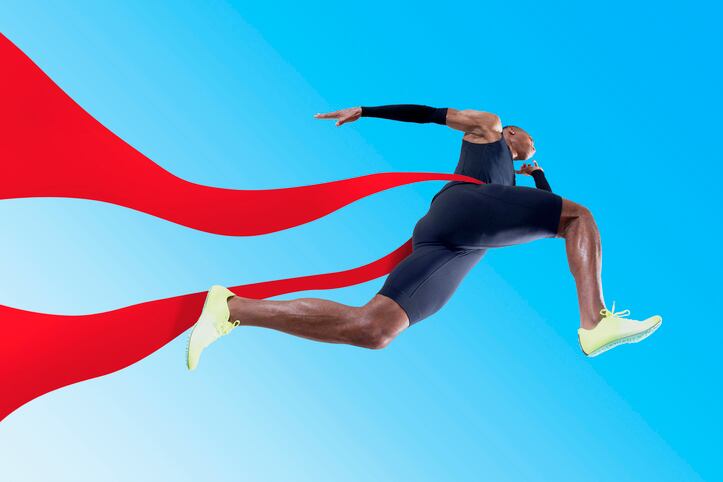With a ‘formidable, distinctive and complementary’ energy portfolio in place, KDP is now enhancing its operating structure and adding dedicated resources to grow in the category: and has set its sights on achieving a double-digit share position in the coming years.
In 2025, the company already expects well over $1bn in retail sales from its energy drink brands, which include Ghost, C4, Black Rifle, Venom Energy and Bloom.
Building up the energy portfolio
In 2022, KDP took a 30% ownership stake in Nutrabolt – the maker of C4 Energy – for $863m. A long-term sales and distribution sees KDP sell and distribute C4 Energy in the majority of KDP’s company-owned direct stores distribution territories, helping increase retail availability and household penetration for the brand.
But KDP’s biggest move into energy was announced last year: with taking on Ghost Energy as part of its acquisition of GHOST Lifestyle LLC and GHOST Beverages LLC.
Ghost Energy’s net sales have more than quadrupled over the past three years, and Ghost Energy is identified as one of the fastest-growing brands in the energy category, characterized by its unique identity and distinctive packaging and flavors.
This purchase substantially enhances KDP’s presence in the energy drink category, extending its reach to new consumers.
These two power brands join others such as Black Rifle Energy (an option for everyday consumers with a focus on convenience stores) and Bloom (KDP signed a sales and distribution for the female-forward energy drink brand last year).
“When you look at this portfolio we’ve assembled, it’s a series of complementary brands that can really target distinct consumer cohorts and demand spaces,” said Tim Cofer, CEO, Keurig Dr Pepper, speaking in the company’s FY2024 earnings call last month.
“C4, our large anchor brand today in the performance space, in fitness, strong offerings in high stimulation segment with the ultimate line. Our Black Rifle partnership, mainstream, veteran founded, unapologetically American. The new Bloom distribution deal that we have, a female-forward brand with a very strong following, tremendous momentum, just getting started. And then Ghost, a lifestyle brand, a younger gen Z millennial target, really exciting flavor range, a leader in zero sugar SKUs.
“As we get deeper and deeper with GHOST we feel great about this deal - I think it’s an attractive asset, it’s fast growing brand, there’s opportunities for KDP to add the value that you’ve seen us add in other partnership deals.”
KDP has purchased a 60% stake in Ghost, which will be followed by the acquisition of the remaining 40% in 2028. KDP is also investing up to $250m to transition Ghost Energy’s existing distribution agreements and bring that into the company’s direct store delivery network in 2025.
“We are hitting the ground running with Ghost, which we will activate in a big way as we transition distribution over the coming months,” said Cofer. The company is now plotting out its plans for the brand in 2025 and beyond.
“I think it’s a very attractive asset and there’s significant opportunity for KDP to add value. Distribution is obviously chief among them, but it goes beyond that. I think there’s supply chain opportunities for us, R&D, insights, etc.
“The distribution handover is going to take place here into KDP DSD [direct store delivery] starting in March. And so we have the opportunity, similar to what we’ve done with other partner brands in the past, to build ACV, build average items carried, build the quality of the display, secondary location, coolers, etc.
“And I think our customers are excited about what we will bring to the party on Ghost.”
The evolution of the energy drink category: from new consumers to category consolidation
These brand investments all illustrate KDP’s optimism in energy: one that’s shared by its competitors at Coca-Cola (which has a long-term partnership with Monster) and PepsiCo (which has put its might and muscle between brands such as Rockstar, AMP Energy, Mountain Dew Kickstart and an investment in Celsius).
Celsius, meanwhile, has just acquired energy drink and lifestyle brand Alani Nu for $1.8bn: like KDP, seeing the advantages of diversifying across energy with a variety of propositions.
“We’re bullish on energy, no doubt about it,” said Cofer.
“We all know it’s one of the fastest growing categories within LRB, close to a double-digit mark over the last three years. I think there remains lots of opportunity to continue to offer differentiated brands that hit unique demand spaces and unique targets. We also like the profitability of the energy category, because it really helps to fund high-quality long-term brand building.
Category consolidation
KDP has snapped up Ghost, Celsius had acquired Alani Nu…. consolidation is happening in the energy category.
“I think that speaks to the attractiveness of energy,” said Cofer. “And quite honestly, these last few moves makes us feel optimistic it will help fuel healthy, high quality competition that should benefit the consumer and expand the overall pie in energy.”
One of the attractions of the energy drink category is the constant need from consumers for energy. The category has long expanded past the stereotypical teenage male consumer: and the key opportunity is to reach consumers whoever and wherever they are.
“The need is there, ever present, ever more so, in terms of a universal need for alertness,” continued Cofer.
“And I think you’re seeing a growing category sophistication in energy, meaning that, yes, there’s continued upside in household penetration, but channel development, there’s still upside, segmentation, price pack architecture, and again, unique positioning.
“We feel good that we’ve constructed now a portfolio that has a right to win in energy. Three years ago, KDP’s share in energy was basically zero. Sitting here today, it’s over 6%, well over $1 billion in retail sales. And we’ve got a double-digit share goal in the years ahead.”

